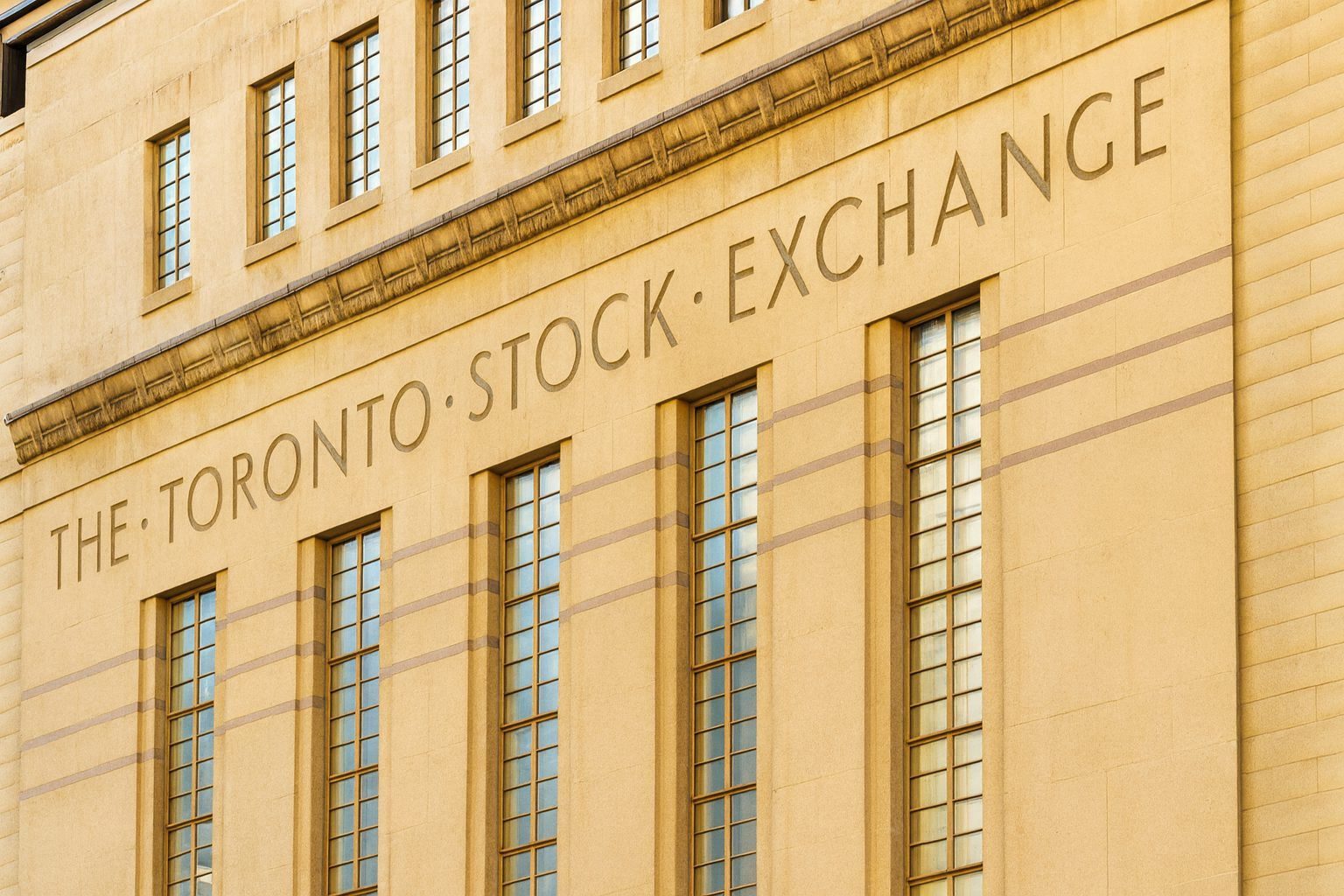Canada’s stock market heads into Friday’s open riding a record-setting streak, but early trading cues are fuzzier than usual. TSX futures are broadly steady, crucial GDP data is due before the bell, oil prices are being tugged by geopolitics and an OPEC+ meeting, and a rare global futures outage at CME Group is distorting the usual pre‑market read. [1]
Here’s everything Bay Street investors need to know before the Toronto Stock Exchange opens today, Friday, November 28, 2025.
1. TSX Today: Record Highs and a Quiet Looking Open
The S&P/TSX Composite index has been on a tear this week:
- On Wednesday, the benchmark jumped 0.9% to a record 31,180.25, powered by a 3.7% surge in materials stocks as gold and copper rallied. [2]
- On Thursday, it notched a fifth consecutive gain, closing at 31,196.71, another record high, with modest strength in energy and technology shares. [3]
This puts the TSX on course for a solid monthly gain and underscores how different Canada’s value‑heavy market (energy, financials, materials) looks compared with the AI‑obsessed U.S. benchmarks. [4]
Pre‑market picture:
- A Reuters headline carried by MarketScreener says “TSX futures steady ahead of GDP data; index set for monthly gain”, indicating a roughly flat start for the cash market after the recent run-up. [5]
- The calm, however, is deceptive: some of the usual signposts—U.S. equity, oil and Treasury futures—have been distorted or frozen by a CME Group outage (more on that below). [6]
For traders, the setup is a classic “calm before the data”: the TSX is at all‑time highs, futures aren’t screaming in either direction, and a single macro release could shift the tone quickly.
2. Canada Q3 GDP at 8:30 a.m. ET: Recession Line in the Sand
The big domestic event this morning is Canada’s third‑quarter GDP report, due at 8:30 a.m. ET (13:30 GMT) from Statistics Canada. [7]
What economists expect
- After a 1.6% annualized contraction in Q2, Canada is widely expected to show a modest rebound of about 0.4–0.5% annualized in Q3. [8]
- RBC Economics, for example, is looking for 0.5% annualized growth, describing the economy as having “steadied” after a trade‑driven slump earlier in the year. [9]
If that consensus is roughly correct, Canada narrowly avoids a technical recession, defined as two straight quarters of negative growth—a point that local media have been emphasizing all week. [10]
Why it matters for markets
- Bank of Canada path:
- The BoC cut its policy rate to 2.25% last month, the lowest in three years. Markets put roughly an 80% chance on no move in December, but a big GDP surprise could nudge those odds. [11]
- A stronger‑than‑expected print could revive talk of further tightening next year and weigh on rate‑sensitive TSX sectors (REITs, telecoms, utilities). A weak number would reinforce a “cut sooner” narrative, helping those same groups.
- Recession narrative:
- Q2’s contraction and multiple weak monthly GDP prints have led some economists to say the economy is “on the precipice of a recession.” [12]
- A positive Q3 number doesn’t mean all clear—growth has been basically flat over the last year—but it does buy policymakers time and could support Canadian bank and consumer stocks.
- FX and commodities feedback loop:
- A strong GDP number tends to support the Canadian dollar, which in turn can modestly pressure exporters and some commodity producers. A weaker print could do the opposite. [13]
Key time to circle: 8:30 a.m. ET. Expect volatility in TSX futures, the loonie and bank stocks as the data hit.
3. CME Outage Freezes Global Futures: Reading the Tape is Harder
A highly unusual development is complicating everyone’s pre‑market read this morning: a major futures outage at CME Group.
- A cooling issue at data‑center operator CyrusOne forced CME to halt trading on its main Globex platform, freezing futures on U.S. stock indexes (S&P 500, Nasdaq), Treasuries, West Texas Intermediate crude, gold, Nikkei and more, as well as CME’s EBS FX venue. [14]
- CME said the issue began around 0240 GMT and has been working to restore markets in stages, with some venues reopening but others still experiencing delays. [15]
Brokerages told Reuters they were effectively “flying blind” without live futures prices, with some temporarily pulling certain contracts and relying on internal models to quote clients. [16]
Why this matters for the TSX open
- Pre‑market cues are less reliable. TSX doesn’t trade on CME, but Canadian investors rely heavily on U.S. stock and commodity futures for direction. With those benchmarks distorted or frozen, the usual “risk-on / risk-off” signals are noisy.
- Potential for a choppy open. When trading resumes fully and prices “catch up,” there’s a higher chance of gap moves across global equities and commodities, spilling into TSX energy, mining and cross‑listed tech names. [17]
- Thin liquidity. The outage coincides with a holiday‑thinned session in the U.S. (shortened trading day after Thanksgiving), further reducing depth in both futures and cash markets. [18]
Bottom line: treat early‑morning futures moves with skepticism and be cautious placing large orders right at the open.
4. Oil & Commodities: Policy Tailwinds Meet Supply Angst
Oil prices: muted moves, big cross‑currents
Crude is trading in a tight range, but the story underneath is anything but boring:
- WTI is around $59 per barrel, largely frozen due to the CME outage. [19]
- Brent is trading near $63, modestly higher on the day as drawn‑out Russia–Ukraine peace talks keep geopolitical risk elevated. [20]
- Both benchmarks are on track for a fourth straight monthly loss, their longest losing streak since 2023, as expectations for higher global supply offset demand optimism. [21]
Traders are also watching this weekend’s OPEC+ meeting, where delegates expect production quotas to be left unchanged, and a possible January price cut from Saudi Arabia to Asian buyers to the lowest level in five years. [22]
Canada’s new energy deal: a structural TSX catalyst
Overlaying all that is a major shift in Canadian energy policy:
- Prime Minister Mark Carney and Alberta Premier Danielle Smith signed a deal that scraps a planned emissions cap on the oil and gas sector and relaxes clean‑electricity rules, in exchange for tougher industrial carbon pricing and support for a massive carbon‑capture project. [23]
- The agreement also aims to enable a new pipeline to the British Columbia coast, with Ottawa pledging to adjust tanker legislation and streamline approvals to attract private investment. [24]
The deal was welcomed by oil producers and pipeline companies as a clear signal that Ottawa wants more investment and export capacity, even as it sparked backlash from environmental groups and prompted a cabinet resignation. [25]
For the TSX:
- Integrated producers, oil‑sands names and midstream companies now have a more supportive policy backdrop, which could underpin valuations even if crude prices remain range‑bound.
- Carbon‑capture and nuclear‑related plays could see growing interest as the federal government backs “Pathways Plus” and new electricity infrastructure to power AI data centers. [26]
Metals and miners: still in the driver’s seat
The materials sector has been the hero of the TSX rally:
- On Wednesday, metal miners helped drive a 3.7% gain in the materials group, as gold and copper climbed on expectations of a U.S. Fed rate cut. [27]
With gold holding firm and Fed‑cut bets rising, miners remain central to the TSX story at the open, especially given Canada’s deep bench of precious‑ and base‑metal producers.
5. Global Backdrop: Fed Cut Hopes vs. China and CME Risk
Europe: small dip, big winning streak
- The STOXX 600 is down about 0.1% this morning but is still on track for its fifth consecutive monthly gain, its longest winning streak since 2024. [28]
- Bank stocks are the main drag, while energy and mining shares are up around 0.3%, echoing the commodity story. [29]
Optimism about a December Fed rate cut and progress in Russia–Ukraine ceasefire talks has underpinned European risk assets this week, even as the CME outage adds an extra layer of caution. [30]
Asia: risk appetite cools
- Asian markets were mostly lower on Friday as China property concerns and speculation about a future Bank of Japan rate hike took the shine off a recent tech rebound. [31]
For Canada, this matters most for:
- Base‑metal names leveraged to Chinese demand.
- Exporters and global cyclicals that benefit from strong Asian growth.
Fed and the U.S. dollar
- A Reuters “Morning Bid” note highlights that markets see about an 85% chance of a Fed rate cut in December, while the U.S. dollar is on track for its worst week in four months. [32]
Lower yields and a softer dollar are typically supportive for:
- Gold and other commodities (good for TSX miners).
- Yield‑sensitive Canadian sectors, if Canadian bond yields follow U.S. Treasuries lower.
6. Canadian Banks & Financials: Fully Valued and Waiting
Canada’s heavyweight banking sector enters the final stretch of the year at a critical juncture:
- Royal Bank of Canada (RY), the TSX’s largest constituent, will report Q4 and fiscal 2025 results on December 3 before the market open. [33]
- TradingEconomics and other calendars show several other Big Six banks following shortly after, making this the de facto start of Canadian bank earnings season. [34]
Valuation-wise:
- A recent Jefferies note described Canadian banks as “fully valued” heading into Q4, downgrading RBC and TD on the view that the good news is largely priced in. [35]
For the TSX open today:
- Banks are unlikely to react much to today’s CME drama, but GDP could matter:
- Stronger growth may be read as supportive for loan demand and credit quality—bullish for banks but possibly tempering rate‑cut hopes.
- Weak growth would reinforce the “lower for longer” rate story, which can help bank valuations via cheaper funding, but raises concerns about credit costs.
Financials have also been minor beneficiaries of the broader “global breadth is improving” narrative: as investors look beyond a handful of mega‑cap AI stocks, value sectors like banks and insurers have enjoyed better flows. [36]
7. Stock & Sector Highlights to Watch at the Open
While the whole tape will be worth watching, a few areas stand out:
Energy producers and pipelines
- Policy support from the Carney–Alberta deal and steady (if unspectacular) oil prices give Canadian oil and gas names a constructive backdrop. [37]
- Any resolution to the CME outage that unleashes pent‑up WTI trading could trigger sharp intraday moves in energy stocks.
Metals, miners and uranium plays
- Gold and base‑metal miners, already driving TSX records, are poised to remain key movers as Fed‑cut bets and global risk appetite ebb and flow. [38]
- On the micro‑cap side, District Metals Corp. reported Q1 2026 results this morning and highlighted Sweden’s decision to repeal its uranium‑mining moratorium from 2026, a reminder of growing interest in nuclear‑linked resource plays. [39]
Rate‑sensitive sectors
- REITs, telecoms and utilities could react to the combination of Fed‑cut expectations, today’s GDP data, and any shift in BoC rate odds.
- A significant GDP miss in either direction could spark rotations within the TSX between defensives and cyclicals.
Cross‑listed tech & AI beneficiaries
- Names with significant U.S. exposure—or that trade in sympathy with the Nasdaq—may see extra volatility when CME fully restores equity index futures. Thin U.S. holiday liquidity could amplify moves in both directions. [40]
8. Practical Trading Checklist for Today’s TSX Open
This isn’t personalized advice, but here are some checklist items many professional traders will be thinking about:
- Know the key times
- 8:30 a.m. ET – Canada Q3 GDP and September monthly GDP.
- 9:30 a.m. ET – TSX cash open.
- Midday – Ongoing CME outage updates and any fresh headlines on OPEC+ or Russia–Ukraine talks.
- Watch these indicators
- Be cautious with early orders
- Given the CME outage and thin global liquidity, spreads and slippage could be wider than usual, especially in commodity‑linked names. [44]
- Think in scenarios, not headlines
- Stronger GDP + firm oil: positive for cyclicals, banks, energy and miners; potentially negative for long‑duration defensives.
- Weaker GDP + wobbly risk sentiment: benefits defensive sectors and high‑quality dividend names; weighs on deep cyclicals and small caps.
- Stay diversified
- With the TSX at record highs and multiple moving parts—GDP, CME, OPEC+, Fed, and domestic policy shifts—the risk of overreacting to a single data point is elevated. A diversified portfolio can help smooth out any intraday surprises.
Canada’s stock market has rarely opened with this many cross‑currents at once: record TSX levels, pivotal growth data, a global futures outage, and a re‑written energy rulebook.
Whether the S&P/TSX Composite extends its record‑setting run today or pauses for breath will likely come down to how GDP prints at 8:30 a.m. and how quickly global futures markets return to normal. Either way, it’s a day where paying attention to both macro headlines and micro liquidity will matter.
References
1. www.marketscreener.com, 2. www.reuters.com, 3. www.reuters.com, 4. www.reuters.com, 5. www.marketscreener.com, 6. www.reuters.com, 7. www.fxstreet.com, 8. www.reuters.com, 9. www.rbc.com, 10. toronto.citynews.ca, 11. www.reuters.com, 12. www.reuters.com, 13. www.fxstreet.com, 14. www.reuters.com, 15. www.marketscreener.com, 16. www.reuters.com, 17. www.reuters.com, 18. www.reuters.com, 19. www.fxstreet.com, 20. www.rttnews.com, 21. www.reuters.com, 22. www.reuters.com, 23. www.reuters.com, 24. www.reuters.com, 25. www.reuters.com, 26. www.reuters.com, 27. www.reuters.com, 28. www.reuters.com, 29. www.reuters.com, 30. www.reuters.com, 31. uk.investing.com, 32. www.reuters.com, 33. www.rbc.com, 34. tradingeconomics.com, 35. finance.yahoo.com, 36. www.reuters.com, 37. www.reuters.com, 38. www.reuters.com, 39. news.cision.com, 40. www.reuters.com, 41. www.marketscreener.com, 42. www.fxstreet.com, 43. www.reuters.com, 44. www.reuters.com










